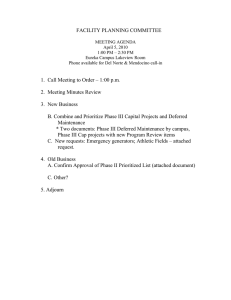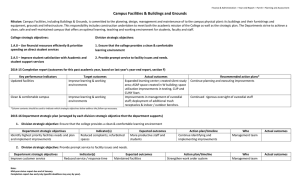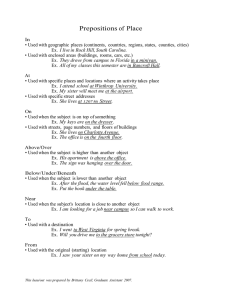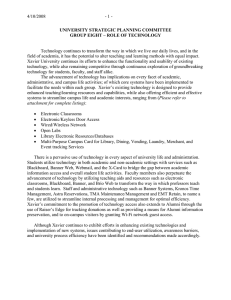Xavier University of Louisiana operates and maintains physical facilities that... the institution's educational programs, support services, and other mission-related activities.
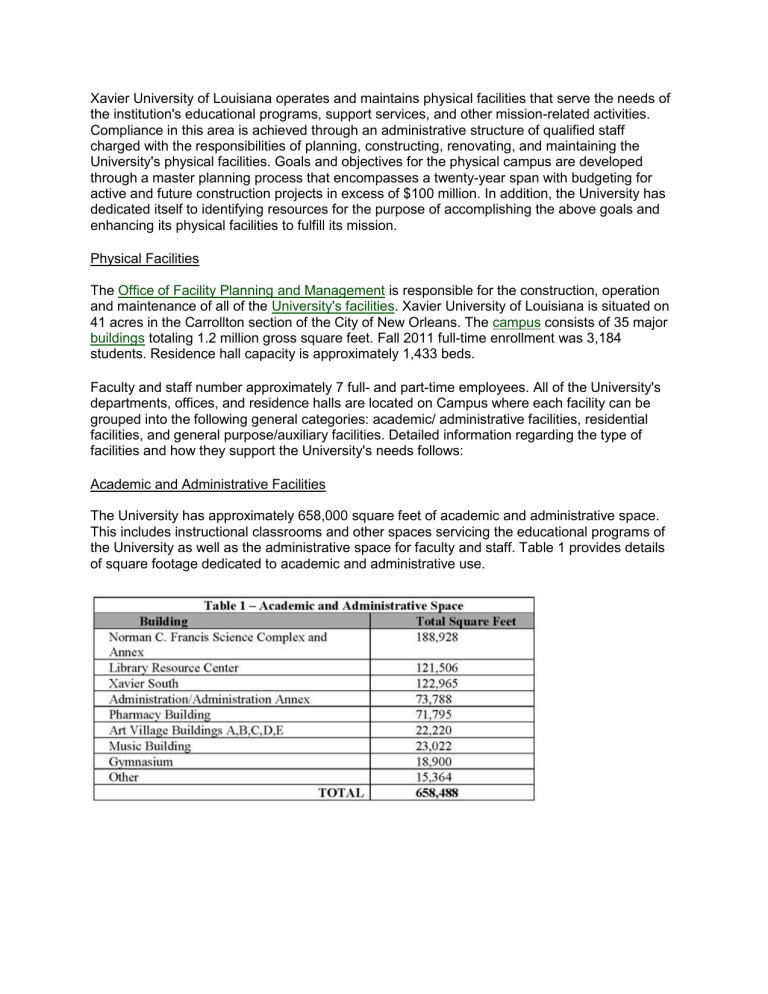
Xavier University of Louisiana operates and maintains physical facilities that serve the needs of the institution's educational programs, support services, and other mission-related activities.
Compliance in this area is achieved through an administrative structure of qualified staff charged with the responsibilities of planning, constructing, renovating, and maintaining the
University's physical facilities. Goals and objectives for the physical campus are developed through a master planning process that encompasses a twenty-year span with budgeting for active and future construction projects in excess of $100 million. In addition, the University has dedicated itself to identifying resources for the purpose of accomplishing the above goals and enhancing its physical facilities to fulfill its mission.
Physical Facilities
The Office of Facility Planning and Management is responsible for the construction, operation and maintenance of all of the University's facilities . Xavier University of Louisiana is situated on
41 acres in the Carrollton section of the City of New Orleans. The campus consists of 35 major buildings totaling 1.2 million gross square feet. Fall 2011 full-time enrollment was 3,184 students. Residence hall capacity is approximately 1,433 beds.
Faculty and staff number approximately 7 full- and part-time employees. All of the University's departments, offices, and residence halls are located on Campus where each facility can be grouped into the following general categories: academic/ administrative facilities, residential facilities, and general purpose/auxiliary facilities. Detailed information regarding the type of facilities and how they support the University's needs follows:
Academic and Administrative Facilities
The University has approximately 658,000 square feet of academic and administrative space.
This includes instructional classrooms and other spaces servicing the educational programs of the University as well as the administrative space for faculty and staff. Table 1 provides details of square footage dedicated to academic and administrative use.
Buildings and classrooms are equipped with technology including wireless access; computer labs; overhead LCD projectors, instructor workstations, and interactive whiteboards in several labs and classrooms. The University also has video conferencing capability in specific labs and continues to assess and expand the information technology needs of the campus.
Campus Master Plan and Capital Improvements
In 2005, the University began developing its current Master Plan. [ Summary | Full Version
(70MB) ] The plan evolved from a simple documentation of existing conditions to a proactive and multi-faceted document encompassing long-anticipated plans as well as new ideas that were only recently made possible. A broad and diverse cross-section of faculty, staff, and students, as well as members of the outside community, participated in the development of these plans.
The plan charts a twenty-year course for Xavier University. It focuses on improving the
University's overall aesthetics while honoring the institution's tradition and history. The Master
Plan encompasses the physical characteristics of the University, its dynamics with the surrounding neighborhood and its relationship with the City of New Orleans. Major capital projects underway or in the planning stages are reflected in Table 3.
As part of its facilities planning program, the Vice President of Facility Planning and
Management submits a report of Archived, Active, and Anticipated projects to the Buildings and
Grounds Committee of the Board of Trustees. The report contains a listing and description of all past or completed, active, and proposed projects. Project priorities are based on the severity of the issue and designated funding. Recent capital improvements and renovation projects completed or currently underway are presented in Table 4.
Space Planning and Utilization
The Office of Facility Planning and Management, in consultation with the Senior Vice President for Administration and the Senior Vice President for Academic Affairs, is responsible for assigning all University space. Stewardship of the academic space rests with the Senior Vice
President for Academic Affairs, and use of non-academic space is determined by the Senior
Vice President for Administration. The attached Space Utilization Report demonstrates that the
University has adequate classroom and academic space to support its educational programs.
All aspects of the learning environment are considered to make spaces flexible enough to accommodate student learning styles and various instructional strategies. Similarly, all campus buildings comply with the guidelines and regulations of the Americans with Disabilities Act
(ADA). There are 156 spaces dedicated to student instruction. Of these 43 are basic classrooms, three provide auditorium-style seating, 50 are wet laboratories and eight are practice labs. There is also a TV station, a radio station, and two recording studios. The learning environment not only provides adequate space for academic offerings, but also supports departmental and student meeting space, and University and community-sponsored programs and events.
Maintenance of Facilities
The mission of the Physical Plant is to provide a clean, safe, and attractive environment for all members of the University community. To that end, physical facilities are maintained, inspected, and evaluated regularly by in-house employees, contract services, and professional consultants.
The Facility Planning Operating Manual describes and defines the scope of services provided by the Office of Facility Planning and Management. These activities are coordinated and executed by in-house personnel for the following types of regular operations: administration and administrative support, carpentry, electrical, plumbing, keys and locks, and drafting. The Central
Plant handles the HVAC (heating, ventilation, and air conditioning) System. Custodial and grounds services are contracted, as are pest control, waste removal activities (including recycling), specialized landscaping, larger scale painting, carpet installation, and major renovations. Consultants are also regularly utilized for architectural, engineering, and construction-related matters. All of these activities are administered directly by the Physical
Plant.
Routine maintenance is scheduled through the Total Maintenance Authority (TMA) Work Order
System and general observation. Preventative maintenance is monitored to extend the life expectancy of the University's infrastructure. Scheduled work entails several categories including work orders based on hours of use, mileage, or periodicity; emergency or service work orders due to malfunctioning elements; and specific assigned work ranging from minor renovations to support services. This type of work is completed by a combination of outside contractors including the University's job order contractors (JOCs) and/or the in-house workforce.
Facility Management tracks and reports deferred maintenance items to the Buildings and
Grounds Committee of the Board of Trustees at each of its meetings. Additionally, the Office maintains a database of Deferred Maintenance projects, and in conjunction with the Office of
Fiscal Services, identifies resources to fund deferred projects prioritized according to status and availability of funds.
